Watch movements, the heartbeat of timepieces, come in various types. They range from the traditional manual winding, giving you a direct connection to your watch, to automatic mechanisms that run with your natural wrist movement. Emerging in the 70s, quartz movements offer precision and longevity. Conversely, digital and smartwatches revolutionize multi-functionality. Each type has pros and cons, influencing accuracy, maintenance, and obviously, the aesthetics. Once you understand these intricacies, you're better equipped to choose. So, don't hesitate to pull back the clock face and discover what really makes your timepiece tick; there's a world waiting to unfurl.
Understanding Watch Movements
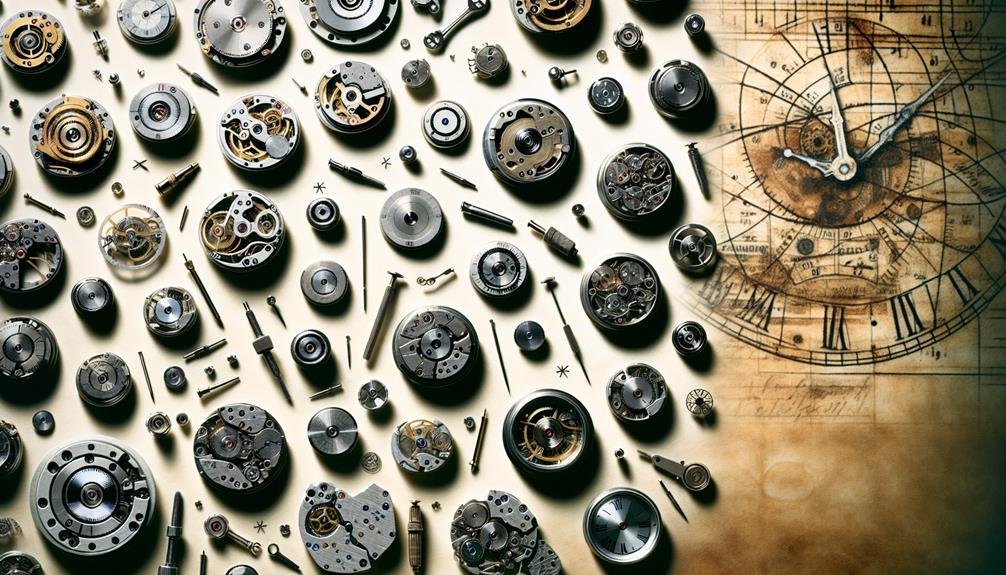
Often, when you're choosing a watch, you're not just picking out a stylish accessory, but also selecting a precise, complex piece of machinery; understanding watch movements can help you make an informed choice. Two key considerations are movement durability and movement aesthetics.
Movement durability is a measure of how long the watch's inner workings will last. It's a reflection of the quality of the materials used and the craftsmanship involved. You'll want to choose a watch with a highly durable movement if you're planning to wear it daily or subject it to any sort of rugged use.
On the other hand, movement aesthetics refers to the beauty and sophistication of the watch's internal mechanism. Some people appreciate the intricate artistry of a finely crafted movement as much as the exterior design of a watch. If you're someone who values the aesthetics of a watch's movement, consider watches with a transparent back – these allow you to see the movement in action.
Manual Winding Mechanism
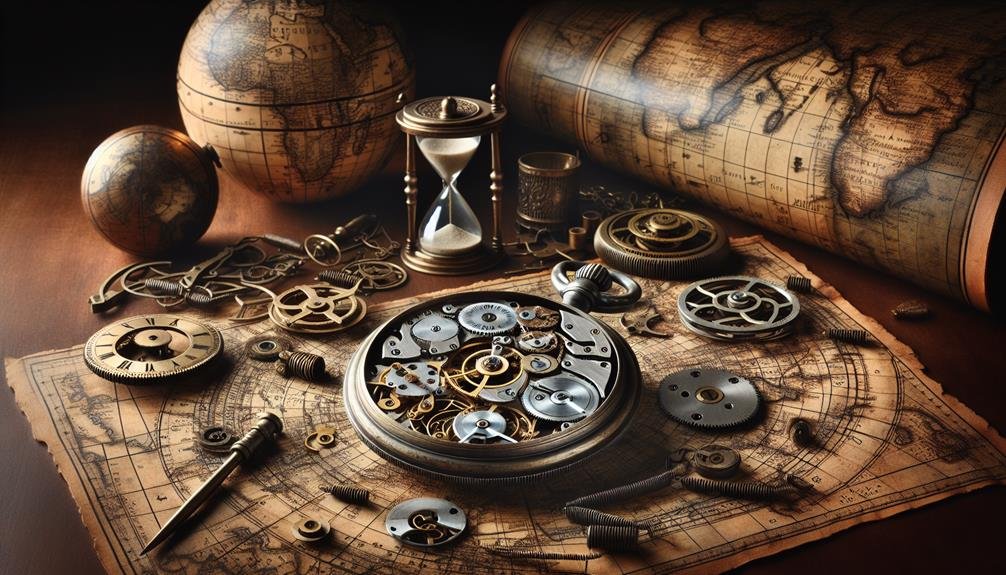
While considering both durability and aesthetics in watch movements, it's worth taking a closer look at the manual winding mechanism. This method relies on you, the wearer, to keep the watch ticking. You'll need to wind the watch manually, typically every day or two, to ensure it keeps accurate time.
When it comes to 'Mechanical versus Manual', there's a bit of a misnomer. Actually, manual watches are a type of mechanical watch. The distinction lies in the winding process. With manual watches, you're in control. You decide when it's time to wind, bringing an intimate connection between you and your timepiece.
The 'Winding Efficiency' of a manual watch can vary. It depends on the design of the watch and how regularly you wind it. If you're consistent, your watch will reward you with excellent timekeeping. But remember, over-winding can damage the mechanism, so be careful not to go too far.
In all, the manual winding mechanism brings a certain charm. It's a nod to tradition in an increasingly automatic world. Yet, it requires commitment, making it a choice for the true watch aficionado.
Insights Into Automatic Movements

Diving into the world of automatic movements, you'll discover a fascinating blend of precision engineering and convenience. Unlike manual winding watches, automatic watches harness your natural wrist movement to keep ticking. It's this self-winding feature that makes them a preferred choice for many watch enthusiasts.
Now, let's talk about luxury automatic watches. They're not just about telling time; they're a statement of style and sophistication. Crafted with meticulous attention to detail, these watches are the epitome of horological excellence. But owning such a marvel comes with responsibilities – mainly, automatic movement maintenance.
Automatic movement maintenance is crucial to ensure the longevity of your watch. Even though they're self-winding, don't be fooled into thinking they don't require care. Regular servicing, ideally every 3 to 5 years, is recommended to keep the watch in optimum condition. This typically includes cleaning, oiling, and replacing any worn-out parts.
The Quartz Revolution
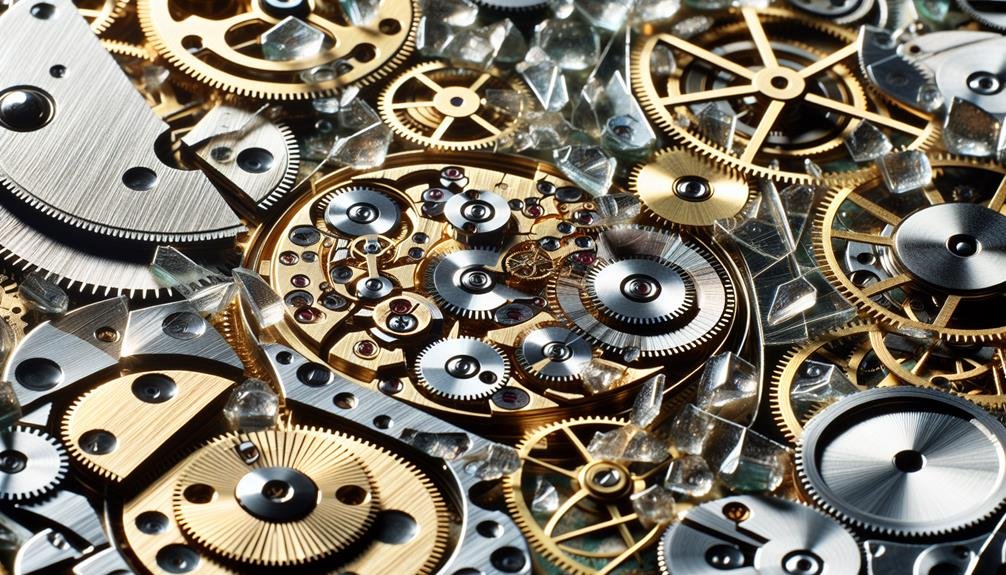
Now, let's shift gears and delve into the Quartz Revolution, a pivotal era in watchmaking that radically transformed the industry. In the 1970s, quartz watches burst onto the scene, quickly gaining popularity due to their superior accuracy and affordability. They were a departure from the traditional mechanical timepieces, using a battery-powered electronic oscillator regulated by quartz crystal to keep time.
The quartz revolution turned the watchmaking world on its head. You see, quartz watches significantly outperformed their mechanical counterparts in terms of accuracy. Quartz accuracy was unprecedented, losing only a few seconds per month, while mechanical watches could lose that much in a day.
A major advantage of quartz watches is their battery life. Unlike mechanical watches, which require winding, quartz watches can run for years on a single battery. This low-maintenance aspect appealed to the masses, ensuring the enduring success of quartz technology.
However, despite their practical benefits, quartz watches initially faced resistance from traditionalists. Over time, though, they've been embraced for their precision and reliability, and they remain a cornerstone of the industry today. So, that's the Quartz Revolution – a seismic shift that redefined our concept of timekeeping.
Digital and Smartwatch Technologies
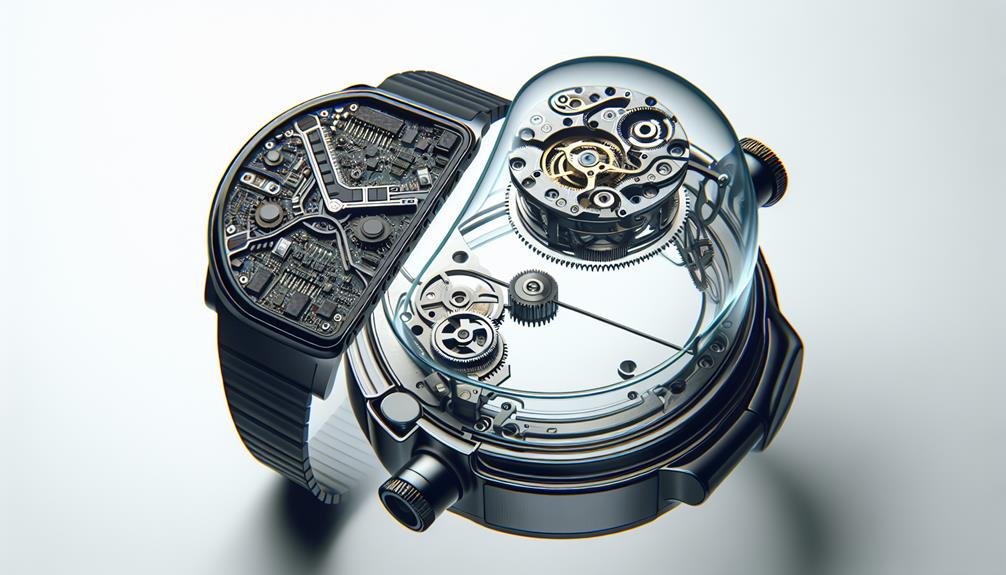
Just when you thought watches couldn't evolve any further, along came digital and smartwatch technologies, revolutionizing the way we perceive and use timepieces. They're more than just a time-keeping device. They're wrist-bound computers, communication devices, and personal assistants.
This wearable tech evolution has transformed the humble wristwatch into a multi-functional tool with a host of capabilities. You'll find features that include GPS, Bluetooth connectivity, mobile payment systems, and even health tracking capabilities. These smartwatches can monitor your heart rate, count your steps, track your sleep, and provide detailed fitness data. Some can even alert you to potential health issues, like irregular heart rhythms.
Digital and smartwatch technologies aren't just about the tech inside, though. They're also about convenience and integration into your lifestyle. You can read and respond to text messages, control your music, get weather updates, and more, all from your wrist. It's timekeeping for the digital age, and it's only getting better.
And while these watches may lack the mechanical artistry of their analog cousins, they offer an unparalleled level of functionality and convenience. They're a testament to how far we've come in the world of timekeeping. Yet, one wonders, what's next in this fascinating journey of horological evolution?
Choosing the Right Movement
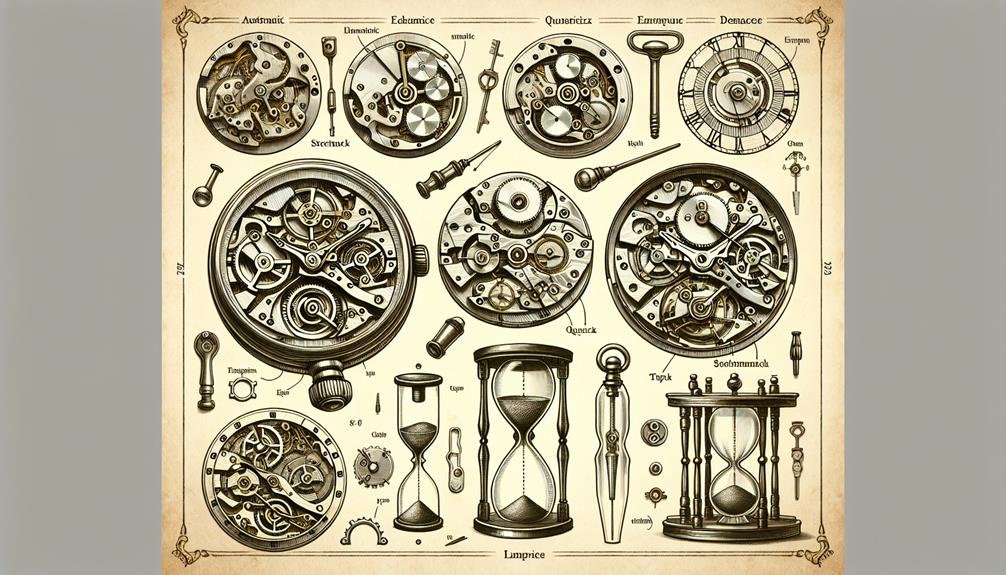
When it comes to choosing the right watch movement, understanding your needs and preferences can make a world of difference. You'll need to consider factors like movement durability and cost considerations.
Movement durability is a major factor. If you're the sporty type or have a job that involves heavy physical activity, you'll want a watch that can withstand the rigors of your lifestyle. Quartz movements, renowned for their durability and accuracy, might be your best bet. They're less likely to suffer damage from shocks or falls.
Cost considerations also play a crucial role in your decision. Luxury watches often feature mechanical movements, hand-assembled by expert watchmakers. They're intricate, beautiful, and, understandably, more expensive. However, if you're budget-conscious, a quartz movement could be more suitable. They're generally cheaper and still offer great accuracy.
In the end, your choice will depend on your lifestyle, budget, and personal taste. Do you value precision and durability over aesthetics? Or are you willing to invest in a timepiece that's a work of art on your wrist? Understanding these factors will guide you in making the best decision for you.
Conclusion
So, you've journeyed through the heart of time, exploring manual winding, automatic movements, the quartz revolution, and digital technologies. Each has its charm and benefits.
But remember, the right watch movement for you depends on your lifestyle and preferences. Whether you're a tech wizard or a lover of tradition, there's a timepiece out there that ticks just for you.
Keep exploring and find the perfect fit for your wrist.
